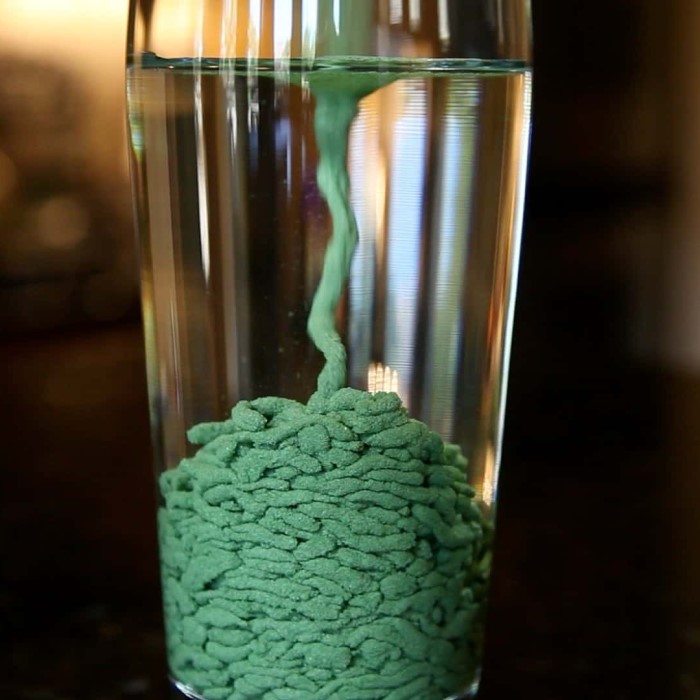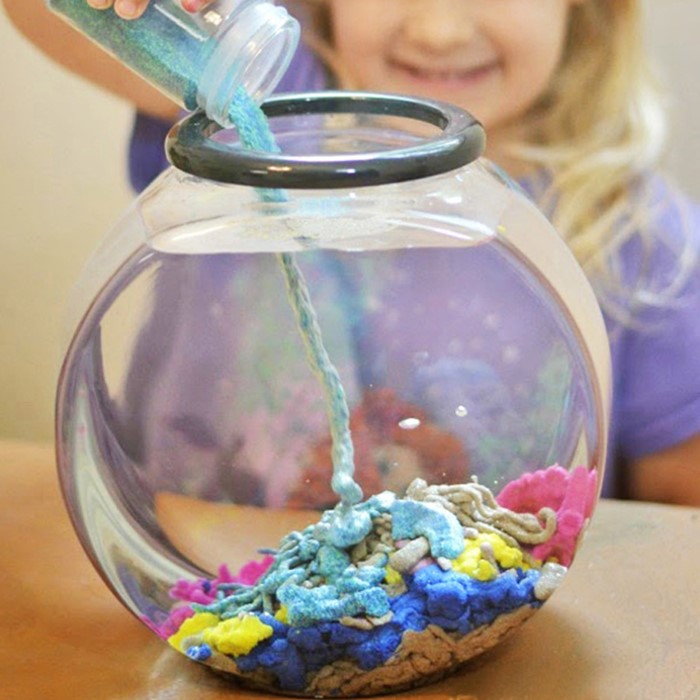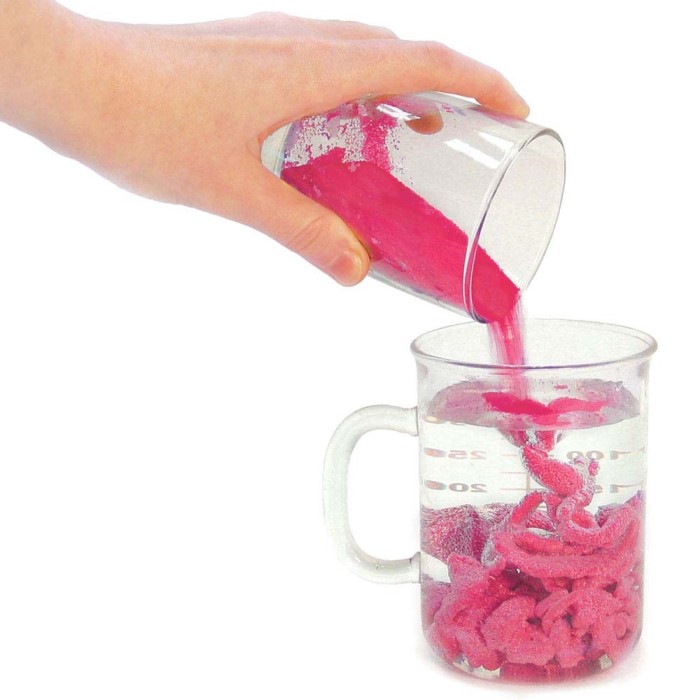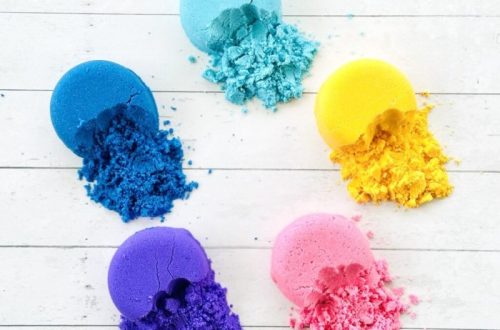Introduction
Kinetic sand has gained immense popularity as a trendy, tactile toy for children and adults alike. Its unique properties provide endless opportunities for creative play. However, many people wonder, “what happens to kinetic sand in water?” This question is not only intriguing but also rooted in the science of materials. In this article, we will explore the fascinating interaction between kinetic sand and water, delve into its physical properties, and conduct fun experiments you can try at home.

This sand feels soft, moldable, and stretchy in your hands. It does not stick to skin or other surfaces, making it mess-free and easy to clean up. Kinetic sand is popular for children’s activities and therapeutic uses as it promotes relaxation.
Often used in toys and crafts, kinetic sand is safe and non-toxic. It is available in a variety of colors, offering endless opportunities for creativity and fun. Despite its soft texture, it holds its shape well when pressed into molds, perfect for detailed designs and structures.
In summary, kinetic sand is an engaging and versatile play material. It combines the tactile fun of sand with a mess-free experience, making it enjoyable for all ages.
Composition and Properties of Kinetic Sand
Kinetic sand is composed of regular sand coated with a thin layer of siloxane polymer. This unique mixture gives it its distinct properties of flow and moldability. The polymer coating creates bonds between the grains, enabling them to stick together.
The sand feels smooth and soft due to its special composition. It does not dry out easily, unlike regular sand. The added polymer ensures that kinetic sand can hold its shape despite being soft and stretchy.
Kinetic sand is non-toxic, making it safe for children and adult activities. It does not stick to your skin or surfaces, providing a mess-free experience. Its water-resistance nature ensures it stays clean and usable longer.
The sand’s elasticity allows it to return to its original form after being shaped. These characteristics make kinetic sand a popular choice for crafting, modeling, and therapeutic uses. Its ability to hold detail is ideal for creating intricate designs and structures.
To sum up, kinetic sand’s composition ensures its versatile and durable properties. This combination makes it fun, practical, and safe for endless creative possibilities.
How Does Kinetic Sand React When Exposed to Water?
Kinetic sand reacts differently to water than regular sand due to its unique composition. Its polymer coating makes it somewhat water-resistant, preventing the grains from fully absorbing water. However, when exposed to water, kinetic sand may lose some of its defining properties temporarily.
Changes When Wet
The sand can become less moldable and lose its smooth, flowy texture. It might clump excessively, making designs harder to create. The interaction with water disrupts the polymer bonds, causing the sand to behave more like regular wet sand. Instead of flowing smoothly, it may feel stickier and heavier.
Dry Versus Wet
While dry kinetic sand maintains its shape and elasticity, water alters its state. Despite the initial changes, kinetic sand doesn’t dissolve or degrade in water. Its water-resistant nature keeps it intact, ensuring it can be restored later.
In summary, kinetic sand reacts to water by temporarily losing its original texture and flexibility. With proper care and drying, these changes can be reversed.
Does Kinetic Sand Absorb Water?
Kinetic sand has unique properties due to its polymer coating. This coating makes it water-resistant. Unlike regular sand, it does not absorb water completely.
Kinetic sand repels water partially, thanks to its hydrophobic polymer layer. This layer prevents the grains from soaking up water. However, the sand can still interact with water to some degree.
When exposed to water, kinetic sand may temporarily lose its texture. It can become clumpy or sticky. This happens because the water disrupts the polymer bonds between sand particles. Despite this, kinetic sand does not dissolve or break down in water.
Dry kinetic sand maintains its softness and moldability. Wet kinetic sand becomes heavier and less elastic. These changes are reversible once the sand dries completely.
In summary, kinetic sand resists water absorption but reacts temporarily when wet. Proper drying restores it to its original state.
Can You Use Kinetic Sand in Water?
Kinetic sand is popular for its engaging texture and creative possibilities. However, it behaves differently in water. Its polymer coating makes it somewhat water-resistant but still reactive.
When immersed in water, kinetic sand loses its unique texture. It can become sticky and heavy, making molding difficult. The grains clump together and feel rough compared to its usual smooth flow.
Kinetic sand does not dissolve in water but temporarily loses its elasticity. This reaction happens due to the disruption of the bonds in its polymer coating. While it can interact with water, it is not suited for prolonged underwater use.
After water exposure, you can dry the sand to restore its original properties. Proper drying allows it to regain its soft and moldable texture. While kinetic sand can touch water briefly, it works best in dry conditions.
In conclusion, kinetic sand is best kept dry for optimal use. Short exposure to water won’t harm it, but continuous water use may limit its functionality. Carefully drying it after contact with water ensures lasting fun and creativity.
Effects of Water on the Texture and Functionality of Kinetic Sand
Water impacts kinetic sand, altering its texture and unique functionality temporarily. The polymer coating in the kinetic sand partially repels water, keeping grains intact. However, when exposed to water, the sand’s bonds are disrupted, causing noticeable changes.
Texture Changes
When wet, kinetic sand kinetic sand in water loses its soft and smooth feel. It becomes clumpy and sticky instead of maintaining its usual shape and elasticity. The sand might feel heavier and rough, making molding difficult and reducing its flowy behavior.
Functionality Impact
Wet kinetic sand loses its versatile play qualities. It becomes harder to form detailed shapes. The disrupted polymer bonds prevent it from holding designs. Its moldability and elastic properties are temporarily affected.
Although kinetic sand doesn’t dissolve, its texture and functionality are not optimal when wet. Drying the sand returns it to its soft and moldable condition. Regular exposure to water should be avoided for consistent use.
In conclusion, while kinetic sand kinetic sand in water reacts temporarily to water, drying helps restore its original properties. Keeping it dry ensures long-lasting texture and functionality.
How to Dry and Restore Kinetic Sand After It Gets Wet
Kinetic sand can lose its texture when it gets wet. However, restoring it is simple and effective.
Step-by-Step Drying Process
- Spread it Out: Lay the wet kinetic sand on a flat, dry surface.
- Use a tray or parchment paper for easy handling.
- Ensure the sand is in a thin layer so it dries evenly.
- Air Dry: Let the sand sit in a well-ventilated area.
- Avoid direct sunlight, as extreme heat might alter the sand.
- Stir the sand occasionally to speed up the drying process.
- Use a Fan (Optional): A fan can help circulate air and dry the sand faster.
- Place the fan at a low to medium speed.
- Avoid using heaters to prevent affecting the polymer properties.
Restoring Texture and Functionality
- Break Clumps:
- Begin by gently kneading the sand in your hands. This process will help break apart any clumps that may have formed during the drying period.
- As you knead, pay close attention to the texture of the sand. Use your fingers to check for consistency, ensuring that it’s not too hard or lumpy.
- Re-mold the sand by reshaping it with your hands. This will help restore its original stretch and softness, making it easier to work with.
- Adjust Moisture if Necessary:
- If, during your inspection, you find that the sand feels too dry, take a few drops of water and add them gradually.
- Be cautious when adding water; too much can overload the polymer bonds within the sand, which can affect its overall performance.
- After adding water, mix the sand thoroughly to ensure that the moisture is distributed evenly throughout the material, enhancing its pliability.
- Check for Usability:
- To determine if the sand is ready for use again, test its moldability by attempting to shape simple patterns or forms.
- If the sand holds its shapes well and flows smoothly without crumbling, it indicates that it has regained its functionality and is ready for creative projects.
- If the texture still feels inconsistent or if you encounter any difficulty in molding, continue the kneading process to achieve a better, more uniform texture.
Preventive Measures for Future Use
Avoid Prolonged Exposure to Water During Play:
-
- Limit the time kinetic sand is used in wet environments to ensure its texture and consistency remain intact.
- Consider designating specific play areas that are dry and free from any water to enhance the longevity of the sand.
- Educate users, especially children, about the importance of keeping kinetic sand away from liquid to maintain its desired properties.
Store Kinetic Sand in an Airtight Container When Not in Use:
-
- Utilize a durable, sealed container to store kinetic sand, which will help prevent it from drying out and losing its unique qualities.
- Label the container clearly for easy identification and proper storage habits.
- Ensure that the container is kept in a cool, dry place away from direct sunlight to further preserve the sand’s condition.
Keep It Away from Moisture-Prone Areas:
-
- Identify and avoid locations that are susceptible to humidity, such as bathrooms or outdoor spaces, where moisture could compromise the integrity of the kinetic sand.
- Create a designated storage area that is specially chosen to be free from moisture, ensuring that the sand remains in optimal condition.
- Regularly check the storage area for any signs of dampness, and take corrective action if necessary to maintain a dry environment for the kinetic sand.
By following these steps, you can easily dry and restore kinetic sand. Proper care ensures its longevity and functionality for endless fun and creativity.
Tips for Storing and Maintaining Kinetic Sand
Proper storage and maintenance of kinetic sand are essential for maximizing its longevity and usability. Follow these practical tips to keep your sand in perfect condition.
Store in an Airtight Container
- Always keep kinetic sand in an airtight container when not in use.
- Airtight containers prevent exposure to dust, moisture, and external contaminants.
- Choose a container with a secure lid to ensure the sand stays dry and clean.
Avoid Moisture-Prone Areas
- Store kinetic sand away from bathrooms or damp places.
- Water and humidity can negatively impact the sand’s texture.
- Keep it in dry and cool locations for optimal preservation.
Prevent Prolonged Water Contact
- Even though kinetic sand is water-resistant, avoid long exposure to water.
- Brief contact with water can be managed, but extended exposure can disrupt its properties.
- Dry the sand thoroughly if it gets wet to restore its texture.
Regular Cleaning
- Check and remove debris like hair, dirt, or small particles periodically.
- Use a fine sieve to sift the sand and keep it smooth and clean.
Keep Away from Extreme Temperatures
- Do not expose the sand to direct sunlight or heat sources for long durations.
- Extreme heat can alter the polymer composition and affect its moldability.
- Store it at room temperature for best results.
Monitor Sand’s Texture
- If the sand feels too dry, add a few drops of water sparingly.
- Knead the sand to distribute moisture evenly and improve its flexibility.
Use Clean Hands and Tools
- Always use clean hands while playing with kinetic sand.
- Dirty or wet tools may introduce unwanted moisture or contaminants.
- Ensuring cleanliness helps maintain the sand’s texture and color.
Following these tips will make your kinetic sand last for years of fun and creative play. Proper care ensures it remains soft, smooth, and moldable for all your craft and sensory activities.
Conclusion
In summary, the question of what happens to kinetic sand in water opens up a world of exploration and learning. By understanding its unique properties and the science behind its reaction with water, we can enhance our appreciation for this captivating material. Kinetic sand is more than just a toy; it serves as a valuable tool for education and discovery. As you delve into these experiments and observations, you will not only enjoy the science but also foster a love for learning. Next time you experiment with kinetic sand in water, remember to embrace the mystery that unfolds before you!








